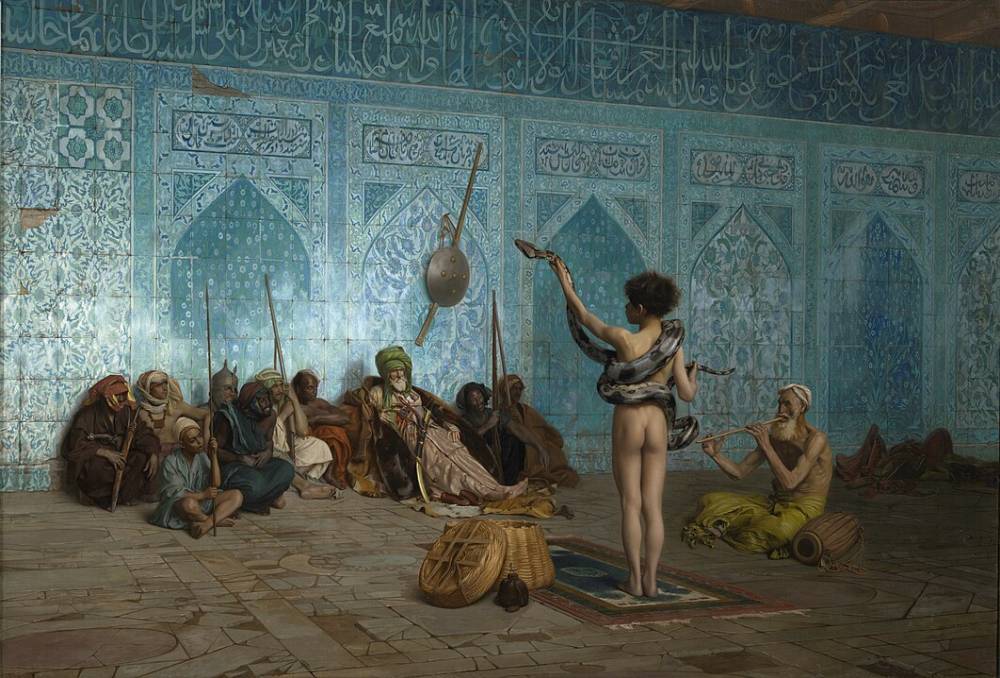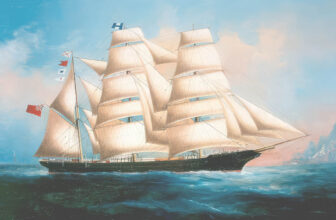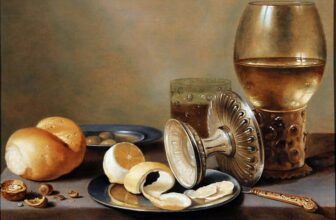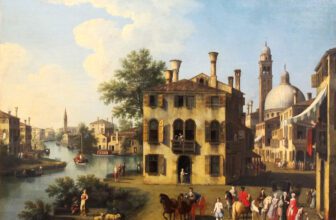Inside the Booming Market for Orientalist Antique Paintings

The Timeless Allure of Orientalist Antique Paintings
Market Trends, Collectors’ Fascination and Future Prospects
The global art market is ever evolving, with trends rising and falling as collectors, museums, and investors seek artworks that reflect both historical significance and timeless beauty. Among the many artistic movements that continue to captivate audiences, Orientalism holds a particularly enduring and fascinating position. Orientalist paintings, characterized by romanticized and often idealized depictions of the Middle East, North Africa, and parts of Asia, have remained highly desirable for centuries. Their market value continues to grow steadily, and their mystique resonates deeply with collectors around the world.
In this in-depth article, we will explore the market for Orientalist antique paintings, why collectors chase Orientalist masterpieces, and the timeless allure of Orientalist paintings, past, present, and future. We’ll dive into art history, collecting trends, investment strategies, and future projections to provide a comprehensive understanding of this powerful art market niche.
Understanding Orientalism: A Historical Overview
The Orientalist art movement emerged in the 19th century, when European artists were inspired by travels to North Africa, the Ottoman Empire, and parts of the Middle East. Painters were fascinated by the architecture, landscapes, clothing, rituals, and people of these regions. The movement reflects a unique blend of reality and imagination, often presenting scenes through a romanticized European lens.
Some of the most celebrated Orientalist painters include:
Jean-Léon Gérôme
Eugène Delacroix
John Frederick Lewis
Rudolf Ernst
Frederick Arthur Bridgman
Ludwig Deutsch
These artists captured scenes of bustling bazaars, serene mosques, desert landscapes, intricate interiors, and figures in flowing robes. Their work appealed to Western audiences eager for exotic imagery and reflected both genuine curiosity and imperial perspectives of the era.
Orientalism wasn’t limited to painting alone. It influenced literature, music, architecture, and decorative arts. But the visual arts, especially oil paintings, became the most iconic representation of this movement, making Orientalist canvases among the most sought-after collectibles in today’s antique art market.
Why Orientalist Paintings Continue to Captivate Collectors
Collectors are drawn to Orientalist paintings for many reasons. Some admire the sheer technical skill of 19th-century painters, while others appreciate the romantic imagery and storytelling. But there’s more beneath the surface.
1. Historical Value and Provenance
Orientalist paintings are often tied to an important historical period, the age of exploration and imperial expansion. Many of these artworks are over 100 years old and have exceptional provenance, having passed through prestigious galleries, private collections, and even royal estates. The historical significance and traceable ownership enhance their desirability.
For instance, works by Jean-Léon Gérôme frequently appear at international auctions and fetch multi-million-dollar prices. Their rarity and historical context make them invaluable additions to private and institutional collections.
2. Aesthetic Beauty and Exotic Imagery
Orientalist painters mastered composition, color, and light. Their meticulous attention to detail created vibrant, lifelike scenes. Collectors are enchanted by the rich textiles, intricate patterns, and striking portrayals of daily life in distant lands. These paintings transform spaces, offering a sense of travel and nostalgia.
3. Cultural Dialogue and Storytelling
While Orientalism has complex colonial connotations, many modern collectors approach these works with a desire to understand and preserve cultural history. Paintings that once depicted “the exotic East” now serve as conversation pieces that explore identity, power, and representation.
Museums and private collectors often display these works not merely as aesthetic objects but as historical documents that reflect the evolving cultural relationships between East and West.
4. Rarity and Investment Potential
High-quality Orientalist paintings are finite. Most were created between the late 18th and early 20th centuries. As time passes, fewer works remain in pristine condition or available for sale. This rarity drives up demand and value. Top-tier Orientalist paintings are considered blue-chip art assets, comparable to works by Impressionists or Old Masters.
Collectors view Orientalist masterpieces not only as cultural treasures but also as investment vehicles that can appreciate significantly over time.
Market Trends in Orientalist Antique Paintings
The global art market for Orientalist paintings has remained strong for decades, with notable spikes in interest during the last 30 years. Auction houses and galleries consistently report high demand from buyers in Europe, the Middle East, and North America.
Auction House Dominance
Major international auction houses, such as Christie’s and Sotheby’s, regularly feature Orientalist paintings in their sales. Specialized departments focus on 19th-century European art, where Orientalism plays a central role. Works by leading Orientalist masters often exceed their pre-sale estimates, demonstrating strong market confidence.
A single canvas by Ludwig Deutsch, for example, has been known to sell for several million dollars at auction, depending on its subject, size, and provenance. Lesser-known artists also perform well, particularly those with distinctive styles or notable exhibition histories.
Regional Market Growth
In recent years, collectors from the Middle East and North Africa have become increasingly active buyers. These paintings resonate with them on a cultural and historical level, leading to fierce competition at auctions and private sales.
Art fairs and exhibitions in cities like Dubai, Doha, and Abu Dhabi have helped fuel regional interest and investment in Orientalist art.
Stable Long-Term Value
Unlike more volatile segments of the art market (such as contemporary art), Orientalist paintings have shown stable appreciation over time. Their historical value, combined with rarity, provides a reliable long-term investment for serious collectors and institutions.
Famous Orientalist Masterpieces and Artists
The market is shaped by a handful of legendary artists whose works represent the pinnacle of Orientalist painting.
Jean-Léon Gérôme
Gérôme is perhaps the most iconic Orientalist painter. His paintings combine academic precision with exotic themes, such as bustling marketplaces, religious ceremonies, and palace interiors. Works like The Snake Charmer and The Carpet Merchant are celebrated worldwide.
Eugène Delacroix
Known for his expressive brushwork, Delacroix captured the spirit of North Africa during his travels in the 1830s. His works are prized not only for their artistic quality but also for their documentation of early encounters between Europe and the Maghreb.
Ludwig Deutsch
Deutsch brought meticulous realism to Orientalist art. His scenes often depict scholars, guards, and dignitaries in stunning architectural settings. His paintings command some of the highest prices in the market.
John Frederick Lewis and Frederick Arthur Bridgman
These artists contributed immensely to the popularity of Orientalism in England and America. Their works often reflect extended stays in the Middle East and offer a rare sense of authenticity.
Orientalist Paintings as Investment Assets
Art collectors and investors increasingly view Orientalist paintings as alternative investment assets. Unlike stocks or bonds, fine art provides both cultural enrichment and potential capital appreciation.
Long-Term Appreciation
Auction records show a steady upward trend in the prices of top Orientalist works over the last 40 years. Paintings that once sold for a few thousand dollars in the mid-20th century now achieve six or seven figures.
Portfolio Diversification
Investing in art allows collectors to diversify their portfolios beyond traditional financial instruments. Because the art market often behaves differently from stock markets, it can help hedge against economic uncertainty.
Tangible Cultural Capital
Owning an Orientalist masterpiece is not just a financial investment, it’s a statement of taste, culture, and legacy. Many collectors loan their works to museums, enhancing their reputation and increasing the artwork’s provenance value.
Increasing Institutional Demand
Major museums and foundations are actively acquiring Orientalist works to broaden their collections and reflect global art history more accurately. This institutional interest helps sustain high market demand.
The Future of the Orientalist Art Market
Continued Global Demand
The market for Orientalist paintings shows no signs of fading. As wealth grows in regions like the Middle East and Asia, more collectors are entering the market with both cultural and financial motivations. Demand is expected to remain strong for rare, high-quality works.
Academic and Curatorial Reassessment
The ongoing academic reassessment of Orientalism, focusing on its historical context rather than mere exoticism, has increased institutional interest. Museums and galleries seek to represent a fuller, more nuanced picture of global art history.
Technological Innovations
Digital platforms and online auctions are making Orientalist art more accessible than ever before. Collectors can now browse and bid on masterpieces from around the world with a few clicks, increasing market liquidity and transparency.
Investment Stability
Compared to other art movements, Orientalism has a remarkably stable secondary market. Its long track record of appreciation, coupled with rarity and historical value, suggests strong investment potential for decades to come.
Why Orientalist Art Appeals to Modern Buyers
Modern collectors often seek artworks that balance beauty, history, and investment value. Orientalist paintings meet all three criteria:
Beauty: Technical mastery and stunning visuals make them ideal for private residences and galleries.
History: Each painting carries cultural and historical narratives that spark conversation.
Investment: The market’s stability and consistent demand make them strong financial assets.
Moreover, the resurgence of interest in global art histories and cross-cultural narratives aligns perfectly with the Orientalist genre, giving it renewed relevance in today’s art world.
Navigating the Market: Tips for New Collectors
If you’re considering entering the Orientalist art market, here are practical tips:
Start with Research: Study auction results and gallery catalogues to understand pricing trends.
Work with Experts: Partner with reputable dealers, appraisers, and conservators.
Attend Fairs and Auctions: Events like those organized by TEFAF Maastricht or Frieze Masters are excellent places to learn and connect.
Prioritize Quality Over Quantity: A single masterpiece can appreciate more than multiple lesser works.
Think Long Term: Orientalist paintings are ideal for collectors who value cultural significance and steady growth.
Potential Challenges in the Market
While the Orientalist market is strong, collectors should also be aware of potential challenges:
Cultural Sensitivity: Orientalism’s colonial history requires careful contextualization, especially in exhibitions and public displays.
Forgeries and Fakes: As with any valuable art market, fraudulent works exist. Authentication is essential.
Conservation Needs: Antique paintings may require ongoing care and restoration.
Regulatory Issues: International art transactions must comply with cultural heritage and export laws.
Knowledge and preparation help mitigate these risks and ensure successful collecting experiences.
Who Buys Orientalist Paintings Today?
The modern Orientalist art collector base is diverse and international. It includes:
1. Private Collectors and Art Investors
Affluent individuals who appreciate both the beauty and the value stability of Orientalist works. Many build personal galleries or integrate paintings into luxurious interior designs.
2. Cultural Institutions and Museums
Museums across Europe, the Middle East, and North America actively acquire Orientalist works for public collections, educational programs, and exhibitions.
3. Foundations and Patrons
Philanthropists who support cultural diplomacy often purchase Orientalist paintings to loan them to institutions, ensuring the public can access and learn from these works.
4. New Generation of Collectors
Younger collectors, particularly in the Middle East, are rediscovering Orientalist art as part of their heritage. Their interest blends cultural pride with strategic investment.
Key Factors That Influence Orientalist Painting Prices
The market value of Orientalist paintings can vary greatly. Several factors play critical roles in determining price:
Artist Reputation – Works by famous artists like Jean-Léon Gérôme or Ludwig Deutsch can sell for millions.
Subject Matter – Scenes depicting mosques, palaces, or bustling bazaars tend to be more sought-after than generic landscapes.
Size and Condition – Larger paintings in excellent condition typically command higher prices.
Provenance – Paintings with a well-documented history or museum exhibitions hold premium value.
Market Timing – Major exhibitions or anniversaries can drive spikes in demand and pricing.
A masterpiece combining several of these factors is considered a blue-chip artwork in the Orientalist market.
Record-Breaking Orientalist Sales
Over the years, Orientalist paintings have achieved impressive prices at international auctions, underscoring their enduring market strength.
A major work by Ludwig Deutsch fetched over $4 million at Christie’s, setting a benchmark for top-tier Orientalism.
Paintings by Jean-Léon Gérôme consistently achieve multi-million-dollar results, with buyers competing from across continents.
Even lesser-known artists, when authenticated and well-presented, can command six-figure prices, especially when the subject matter is compelling.
These record sales fuel confidence among collectors and investors, reinforcing Orientalist art’s reputation as a reliable and prestigious investment.
A Look at Future Generations of Collectors
As wealth transitions to younger generations, Orientalist art is finding new audiences:
Millennial and Gen Z collectors are drawn to its historical narratives and visual grandeur.
Digital natives are engaging with Orientalist art through online exhibitions, NFTs for provenance, and virtual galleries.
Younger collectors are more globally minded and culturally aware, appreciating both the aesthetic and critical context of these works.
This generational shift promises to sustain market growth well into the future.
Why the Allure of Orientalist Paintings Is Timeless
The enduring appeal of Orientalist paintings can be summarized through three intertwined elements:
Artistic Excellence – Technical mastery and romantic imagery make these works visually captivating.
Historical Depth – They reflect pivotal moments of cultural exchange and global exploration.
Cultural Relevance – In today’s interconnected world, they spark conversations about identity, representation, and heritage.
Collectors are not merely buying paintings, they are acquiring pieces of history that continue to inspire, challenge, and captivate.
A Golden Era for Orientalist Art Collectors
The market for Orientalist paintings stands at an exciting crossroads. With rising global demand, strong auction records, and increasing institutional interest, this genre continues to be a pillar of the antique art market.
Collectors chase Orientalist masterpieces not only for their beauty and rarity but also for their ability to connect past and present. These paintings serve as bridges between cultures, inviting reflection on history and identity.
Whether displayed in a museum gallery, a private home, or a digital exhibition, Orientalist art remains a symbol of timeless elegance and historical significance.
For those entering the market today, the future looks bright. As awareness deepens, collections grow more sophisticated, and technology enhances accessibility, Orientalist paintings will continue to hold their rightful place among the world’s most cherished and enduring artistic treasures.




